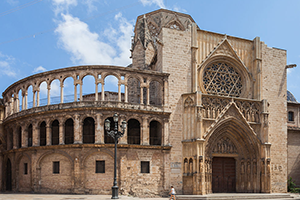Churches, Mosques, Churches, and Then?

Callista and I were on a tour of Valencia, Spain when a comment by our guide made me think about our current conflict with Islamic supremacists from a very different historical perspective.
We were standing in front of a church that had previously been a mosque.
And before it had been a mosque, it was a church.
It was an architectural reminder that throughout history there have been religions and cultures that enjoyed proving were on the rise by converting their opponentsí centers of worship to the faith of the conquerors.
Similarly, on the Spanish island of Menorca, where today the cathedral stands formerly stood a mosque. The minaret was modified to become a bell tower.
The transformations and restorations of Spainís great religious buildings are an artifact of the countryís fascinating past as a nation conquered and reconquered throughout history.
Spain was overrun, and most of it occupied, by Muslims from Northern Africa in the eighth century.
Then, in a long struggle over the next seven hundred years, Christians gradually regained control of Spain.
1492 was not only the year that Ferdinand and Isabella financed Christopher Columbusís voyage to the New World. It was also the year the Catholic monarchs completed their reconquest of Spain, capturing the great Moorish palace at Granada, the Alhambra.
Now, a little over five centuries later, we are once again witnessing a historic clash of two systems of belief--western liberal democracy, and totalitarian Islamic supremacism. This clash is different in many ways from the events of medieval Spain, but some elements look surprisingly familiar: a surge of migration to western Europe, attacks on the predominant culture, norms and institutions, and even efforts to coerce compliance and force conversion.
This visit to Spain reinforced the impression we got in June when we went down the Danube from Germany to Budapest. At that time we noted how deep into central Europe the Turkish Empire had driven in both the 16th and 17th centuries.
The memory of a Turkish Army whose scouts were west of Vienna is a reminder of how powerful and aggressive the Ottoman Empire was and how disorganized and limited the Christian Europeans were. Twice Vienna was besieged by the Turks and twice it was saved only at the last minute.
These memories of history spanning 1,200 years may help put the current skirmishes with Islamic supremacists in a broader perspective. Perhaps we are not so far removed from the patterns and conflicts of the past as we would like to think.
Your Friend,
Newt